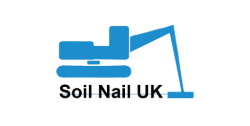Rope access is a form of work positioning that utilises ropes and specialised equipment to access and work in hard-to-reach areas at height or depth. It is commonly used for tasks such as maintenance, inspection, repair, and construction where traditional access methods like scaffolding, cranes, or aerial work platforms are not feasible or cost-effective. Rope access has become a popular and widely accepted method for working at height or depth due to its many advantages, including safety, versatility, cost-effectiveness, and efficiency.
Rope Access
Some key features of rope access include:
Rope access systems require minimal setup and do not obstruct the surrounding area, making them suitable for working in confined or sensitive environments.
Rope access can be used in a wide range of environments.
Rope access techniques are designed to provide a safe working environment for technicians working at height or depth. Workers are typically trained and certified in rope access techniques to ensure their safety.
In many cases, rope access can be a more cost-effective alternative to traditional access methods due to reduced setup time, labour costs, and equipment requirements.
Rope access technicians can often reach and complete tasks more quickly than with traditional access methods, leading to increased productivity.



